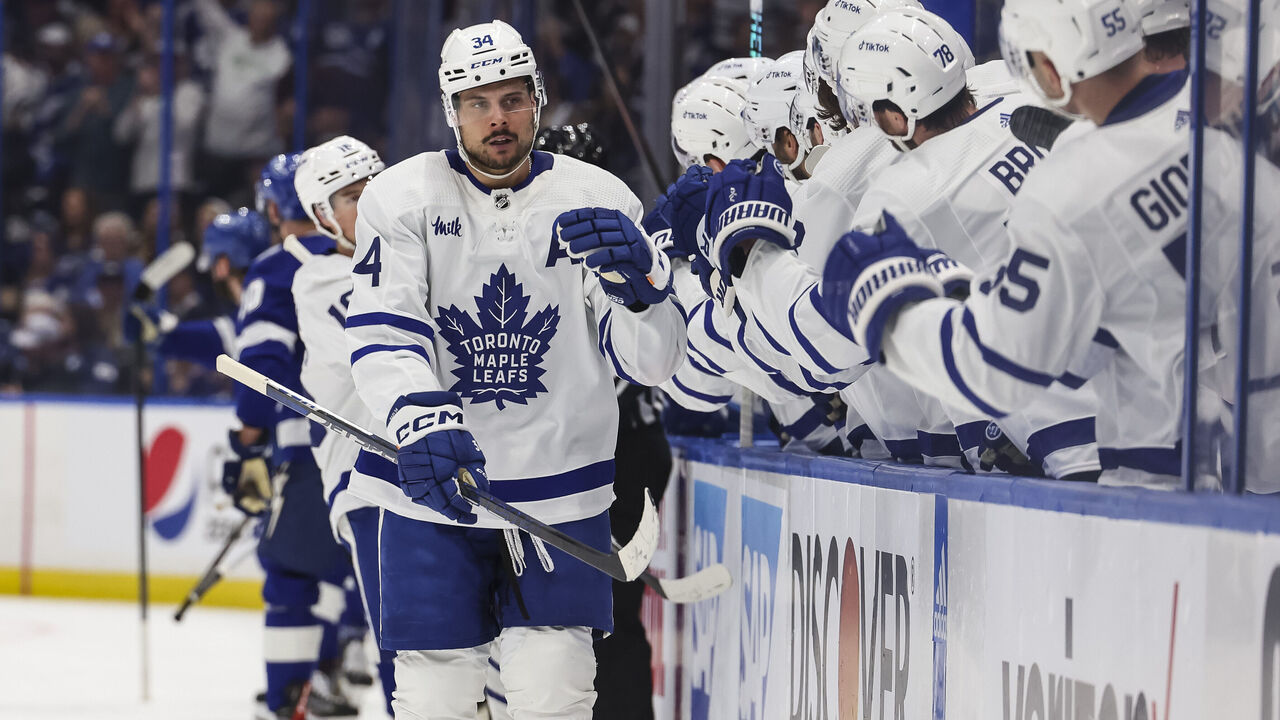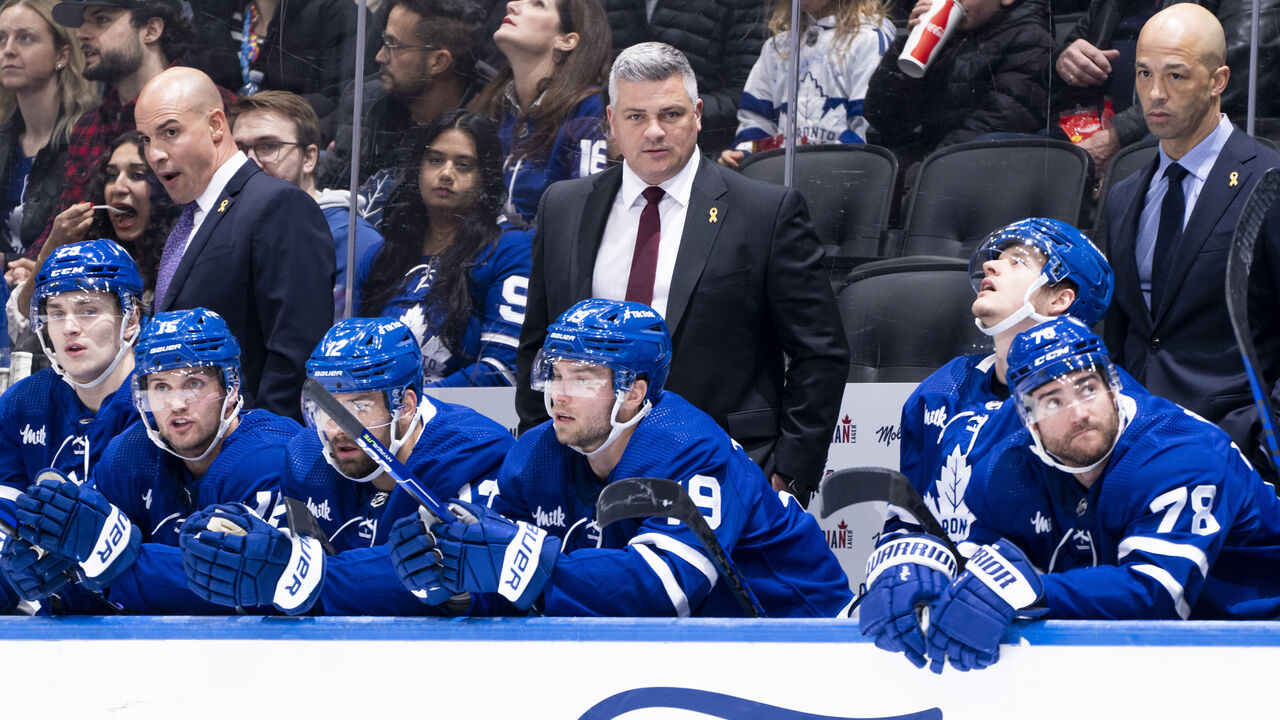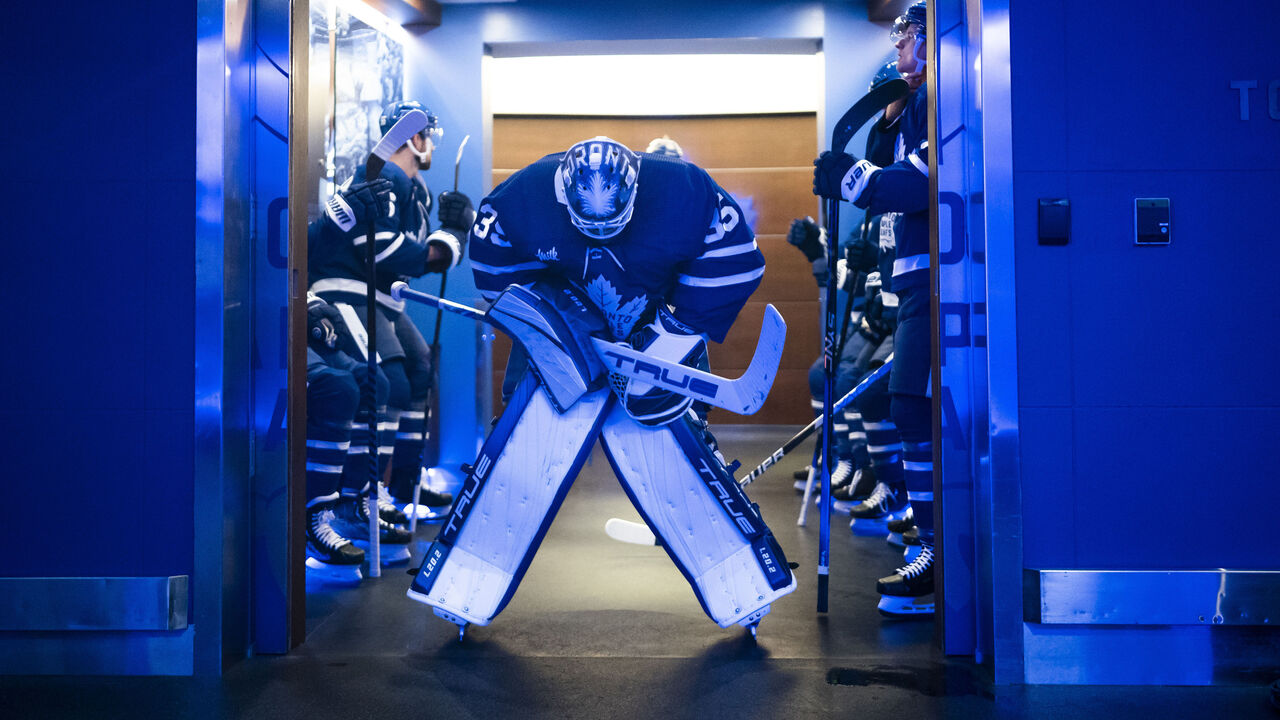Why the Leafs finally broke through - and what lies ahead in Round 2
The Maple Leafs finally did it. On Saturday night, Toronto ended a 19-year playoff skid by defeating the Tampa Bay Lightning 2-1 in overtime. The game-winner, off the stick of captain John Tavares, triggered celebrations across Canada. Advancing to the second round was the first step toward changing the narrative. Why was this year different, and what lies ahead in Round 2?
Why this year was different
Sheldon Keefe framed the moment perfectly in the aftermath of Game 6.
"We've been talking about it feeling different with our team," the Leafs coach told reporters. "But feeling different doesn't help us. It has to be different."
That's what's at the root of Toronto finally breaking through: The Leafs won their first series close-out game in 11 tries since 2018 because of execution. It showed up in where they won (on the road three times), when they won (in overtime three times), and how they won (a pair of third-period comebacks). They were assertive, playing to win versus playing not to lose, like in the past.
Game 4 encapsulated the entire journey. The Leafs' gutsy, come-from-behind road victory not only gave them a 3-1 stranglehold on the Lightning but also remixed a long-running jab: "IT WAS 4-1!" can mean something different now.

All four players who've been around since the 2017 first-round loss to the Washington Capitals shined against the Lightning. Auston Matthews, Mitch Marner, William Nylander, and Morgan Rielly all contributing at the same time in a playoff series is something you just couldn't say with a straight face until now. Toss in Tavares, who arrived in dramatic fashion in 2018, and the Core Five didn't wilt under the pressure of leading a seemingly cursed franchise.
While Marner, Nylander, and Tavares had impactful games and finished with a combined 25 points, Matthews and Rielly were epically good all series.
Matthews, the franchise center, finished with five goals, four assists, 23 shots on goal, 35 scoring chances, seven takeaways, 19 hits, two drawn penalties, and a 60% five-on-five expected goals rate. His back-to-back third-period goals triggered Game 4's comeback, and in Game 6, he opened the scoring with a one-timed blast.
Rielly, the No. 1 defenseman, was a puck-moving and rushing machine who led Toronto in ice time (24:04 a night) and black eyes (two). The longest-tenured Leaf kept coming through in the clutch: An OT goal in Game 3, a tying goal in Game 4, an opening goal in Game 5, and an assist on the OT goal in Game 6.

Rielly's partner was phenomenal, as well. Luke Schenn, the 2008 Leafs first-rounder reacquired before the trade deadline, was on the ice for seven goals for and one goal against. The 33-year-old issued 34 hits, made smart plays with the puck, and thrived as Rielly's safety valve in 104 minutes of action.
Another recent addition, rookie forward Matthew Knies, had a tremendous five games after drawing into the lineup for Game 2. Keefe trusted the hard-working, big-bodied, cerebral winger to move up and down the lineup and to skate in high-pressure situations. Knies was on the ice for all three OT goals.
Goalie Ilya Samsonov, yet another newcomer this season, wasn't perfect in the series, as evidenced by his .900 save percentage. But he was definitely good enough. The affable Russian saved his finest performance for Saturday when he outdueled longtime playoff beast and countryman Andrei Vasilevskiy.
This year was different for the Leafs because the mix was different. The Core Five remained, yet the overall roster evolved into the deepest of the Matthews-Marner era. And that depth dethroned Tampa. Props to general manager Kyle Dubas, who changed the complexion of the group through moves in the summer and during the season. Yeah, his job likely is safe now.
What lies ahead in Round 2

The Leafs await the result of Sunday night's Game 7 between the Boston Bruins and Florida Panthers to know which team will be staring back at them in Round 2. And, let's face it, both would love to spoil the party in Toronto.
A few things are certain, regardless of the opponent. For one, the power play can't be a non-factor later in the series - or any part of the series, really.
Against Tampa, Toronto scored two power-play goals each in Games 1, 2, and 4. Otherwise, the Leafs failed to capitalize with a man up. The opportunities dwindled from an average of four per game in the first four contests to two per game in the final two, so the drop-off wasn't entirely their fault. That said, with the amount of firepower at Keefe's disposal, there weren't enough scoring chances and far too many shorthanded breaks. That won't fly moving forward.

Another pressure point: The Leafs need to figure out how to better penetrate the neutral zone. The Lightning dominated the transition battle for large chunks of the first round. The Leafs had issues breaking the puck out of their own zone, and when they did manage to exit safely, a Tampa forward seemed ready to pounce on the puck carrier with a stick or body check. Anthony Cirelli and Brayden Point were particularly effective in this department.
Boston or Florida both have the horses up front to adopt a similar approach and, based on regular-season data, are more adept counter-strike teams than Tampa. (The Bruins and Panthers ranked sixth and ninth, respectively, in scoring chances generated off the rush, according to Sportlogiq; Tampa was tied for 14th.) This dynamic places additional emphasis on Keefe's tactical acumen. The Leafs must find a way to at least break even in the neutral zone.
What both teams also have that Tampa doesn't: Back ends filled with NHL-quality defensemen. Erik Cernak's Game 1 injury opened the door for the Leafs to expose the Lightning's already thin blue line. As of right now, the Bruins and Panthers are both healthy and well-stocked. (That said, the lumbering Marc Staal is one guy to target off the rush if Florida gets through.)

The third inevitable: The game within the game will continue. Tampa, recent two-time Stanley Cup champions, tried to get into the Leafs' heads, whether it was coach Jon Cooper's passive-aggressive soundbites, Nikita Kucherov slashing Samsonov's stick out of his hands, or Pat Maroon chirping non-stop. That's playoff hockey, and Toronto responded positively. On the other side of Corey Perry's antics is either Matthew Tkachuk or Brad Marchand. There's no doubt the advancing super-pest will try to use his words and play to rattle the Leafs.
Otherwise, all eyes are on Keefe's lineup choices. The fourth-year coach's late-series gamble paid off, as the 11-forward, seven-defensemen configuration and reinsertion of winger Michael Bunting led to a Game 6 win.
Is Justin Holl, scratched after being on for 14 of Tampa's first 20 goals, now securely eighth on the depth chart of defenseman? Or was one game in the press box enough punishment for the Keefe and Dubas favorite? And what about the fourth line, which, beyond center David Kampf, struggled all series? Are wingers Sam Lafferty and Zach Aston-Reese in the coach's doghouse?
You'll notice those question marks are further down the lineup. That's what happens when a team as talented as the Leafs wins. Your problems go from existential to granular. And, if the Leafs continue to play up to the standard they set in the opening round, those lesser problems won't ultimately matter.
"I've been here seven years," Matthews said. "Mitchy, Willy, Mo's been here 10, Johnny five (or) six, and just to get over that hump is obviously huge mentally for us. To get that monkey off our back. We don't want to look back now. We want to keep putting our foot on the gas and keep pressing forward."
John Matisz is theScore's senior NHL writer. Follow John on Twitter (@MatiszJohn) or contact him via email ([email protected]).